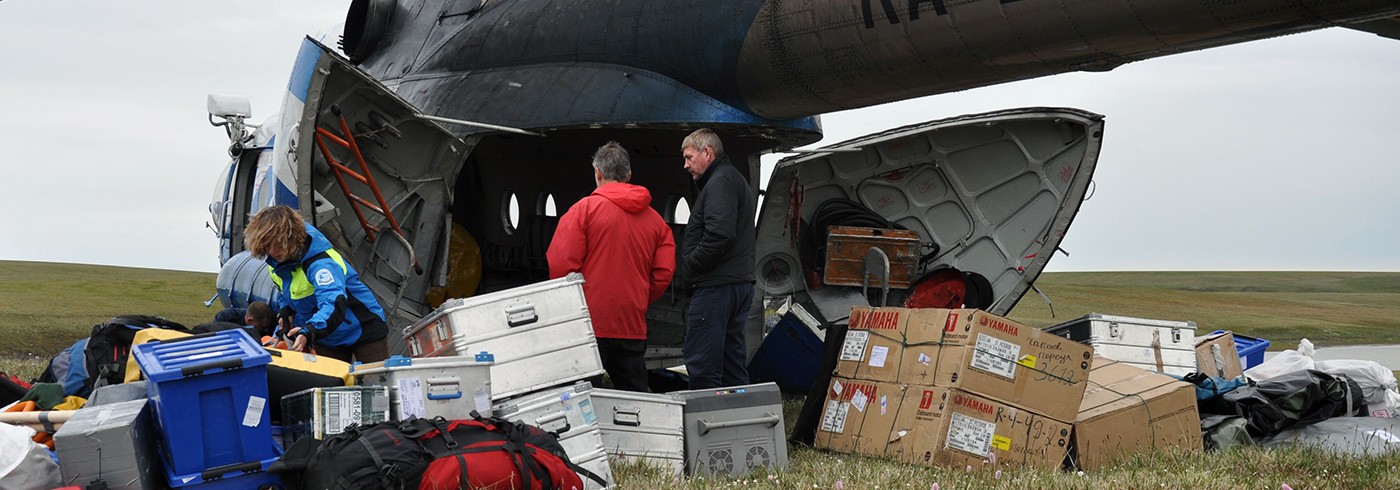The Buotankaga river traverse
31 July 2012 - 31 August 2012Figure 1: Mesozoic deformation in Taymyr. Deformation across Taymyr may be diachronous, synchronous, or separate in time from Verkhoyansk deformation.
DFB, foldbelt; SZ, Severnaya Zemlya. Our 2010 (east) and 2012 (west) study areas = white triangles.
The Canada Basin, at >3,000 m below sea level, is the deepest basin in the Arctic Ocean. Understanding of Mesozoic tectonic events and how this ocean basin formed have important implications for many Arctic topics (e.g. natural resources, ocean circulation, etc.).
The age of folding in Taymyr varies, resulting in different interpretations of its Mesozoic tectonic development. The nature and timing of deformation in Taymyr will establish potential links and test models to constrain the tectonic development of the Amerasian Basin. The 2012 Buotankaga River traverse, combined with our 2010 Chernokhrebetnaya River expedition to eastern Taymyr, enables comparison of the two regions, leading to a better understanding of the tectonomagmatic and sedimentary history of the region.
The Buotankaga River exposes regionally deformed Ordovician through Triassic strata. Hiking and using a boat to cross the river, we collected samples for sediment analysis. The BC1 section was folded and thrust south along a terrane-bounding fault. Ordovician limestone is highly deformed; sometimes in depositional contact, and sometimes in fault contact, with younger sediments. The stratigraphy is highly cleaved. Late Carboniferous–early Permian sandstone, siltstone, and mudstone are thrust over Triassic terrigenous clastic rocks.
BC2 is further from the main thrust. Strata are still folded, but less cleaved. Devonian limestone occurs only in the cores of folds, suggesting that basement rocks are less involved in thrusting to the south.

BC1 (a) Ordovician limestone in contact with Triassic sediments (main thrust), (b) highly deformed limestone, (c) terrigenous Triassic clastics; BC2 (d) Folded, little cleaved Carboniferous–Permian sediments, (e) primary features (crossbeds), (f) Triassic with fossil plants.
Initial results clarify the tectonic evolution of southern Taymyr:
- Pronounced bedding/cleavage relationships in the older (Paleozoic) rocks are consistent with south-vergent, asymmetric folding of Permo–Triassic age.
- The youngest deformed strata is Triassic in age.
- Deformation decreases to the south.
Consistent with 2010 results, diachronous and polyphase Uralian deformation extends into Taymyr. The data indicate Mesozoic deformation is as important as earlier late Paleozoic deformation.


